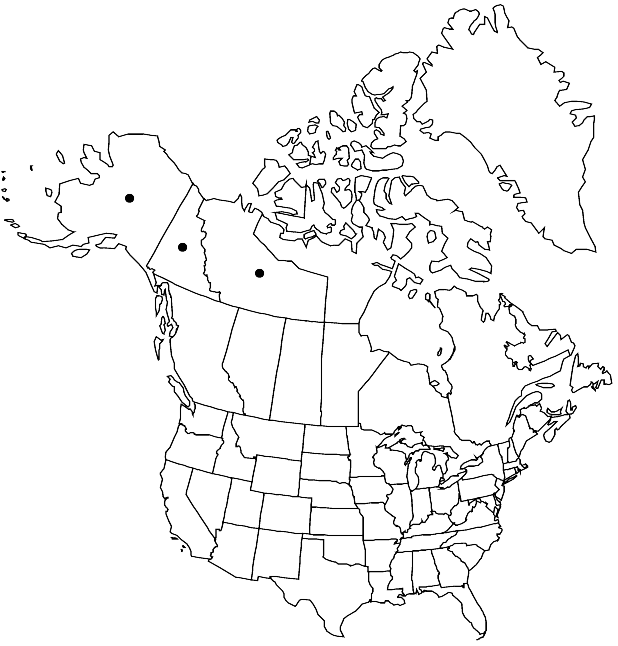Draba palanderiana
in A. E. Nordenskiöld, Vega Exp. Vetensk. Iakttag. 2: 45. 1883.
Perennials; (cespitose); caudex branched (with persistent leaf remains, branches sometimes terminating in sterile rosettes); scapose. Stems unbranched, 0.2–1.1(–1.5) dm, pubescent proximally, trichomes 2–9-rayed, 0.05–0.2 mm, glabrous or sparsely pubescent distally. Basal leaves rosulate; petiolate; petiole (thickened), ciliate proximally, (margin not ciliate, trichomes simple and 2-rayed, 0.2–0.5 mm); blade oblanceolate to obovate, 0.3–0.9(–1.5) cm × 1–4 mm, margins usually entire, rarely denticulate, surfaces pubescent with minutely stalked, 8–16-rayed, stellate trichomes, 0.08–0.3 mm, (midvein obscure abaxially). Cauline leaves 0. Racemes 5–17-flowered, ebracteate, elongated in fruit; rachis not flexuous, usually glabrous, rarely sparsely pubescent as stem. Fruiting pedicels divaricate-ascending, straight, (slender), 4–10 mm, usually glabrous, rarely sparsely pubescent as stem. Flowers: sepals ovate, 2–2.5 mm, pubescent, (trichomes simple and short-stalked, 2–6-rayed); petals white or creamy white, obovate, 4.5–5.5 × 2–3 mm; anthers ovate, 0.4–0.6 mm. Fruits (often aborting, becoming lopsided), oblong to elliptic or ovate, plane, flattened, 4–8 × 2–3 mm; valves glabrous; ovules 18–32 per ovary; style 0.3 0.8 mm. Seeds ovoid, 0.9–1.1 × 0.5–0.7 mm. 2n = 16, 32, 64.
Phenology: Flowering Jun–Jul.
Habitat: Rock outcrops, talus, Dryas fellfields, tundra
Elevation: 0-1800 m
Distribution

N.W.T., Yukon, Alaska, e Asia (Russian Far East, Siberia).
Discussion
North American plants of Draba palanderiana are diploid and appear to be self-incompatible, an unusual situation among arctic members of the genus. By contrast, some plants from the Russian Far East are tetraploid (2n = 32) or octoploid (2n = 64) and appear to be self-compatible. Detailed studies are needed to establish whether one or two taxa are involved.
Many North American collections of Draba palanderiana have been misidentified as D. nivalis. The species is easily separated from D. nivalis by having ciliate (versus non-ciliate) bases of basal leaves, larger petals (4.5–5.5 × 2–3 versus 2–3.5 × 0.8–1.4 mm) that are pale yellow or cream (versus white), and longer fruiting pedicels 4–10 [versus 1–4.5(–8)] mm.
Selected References
None.